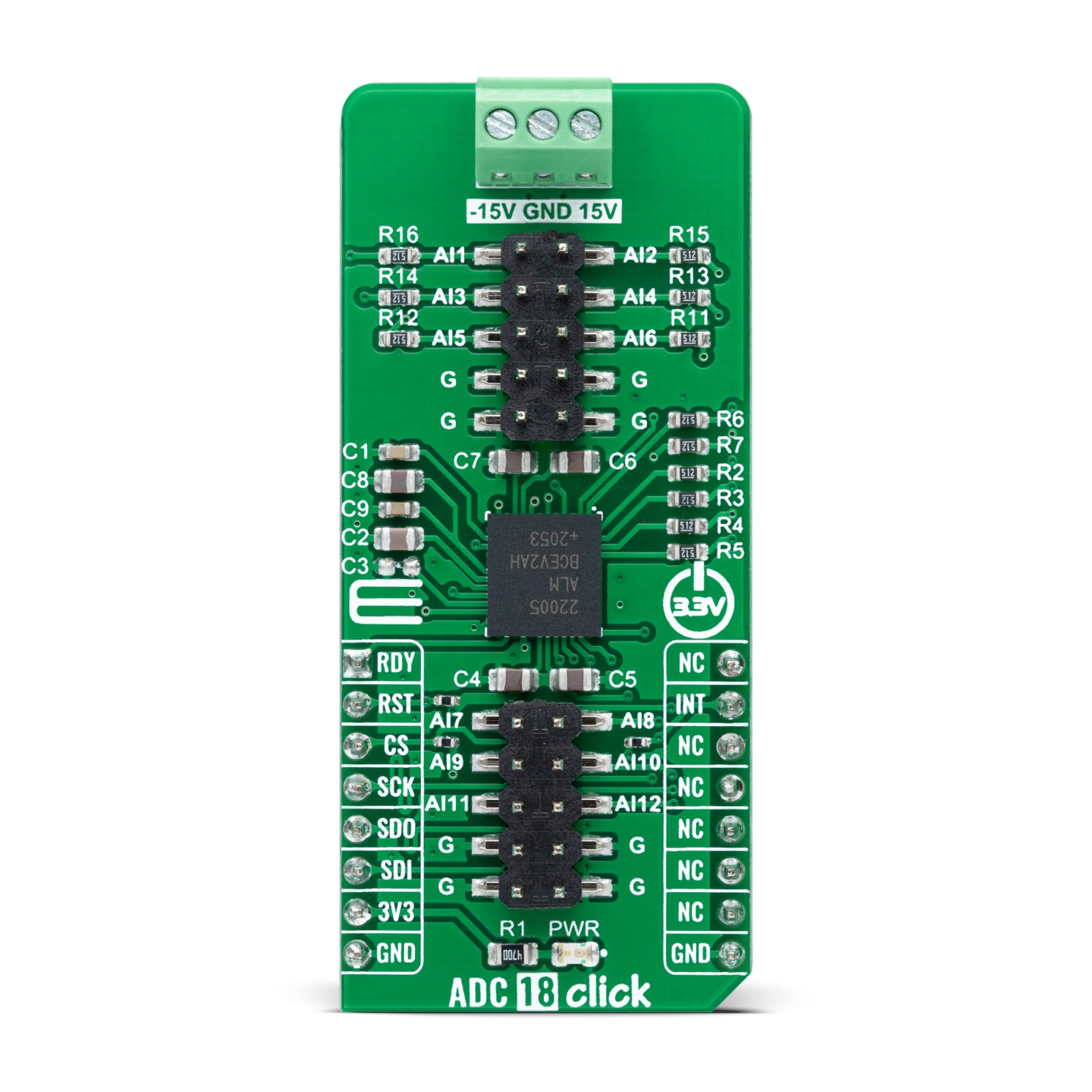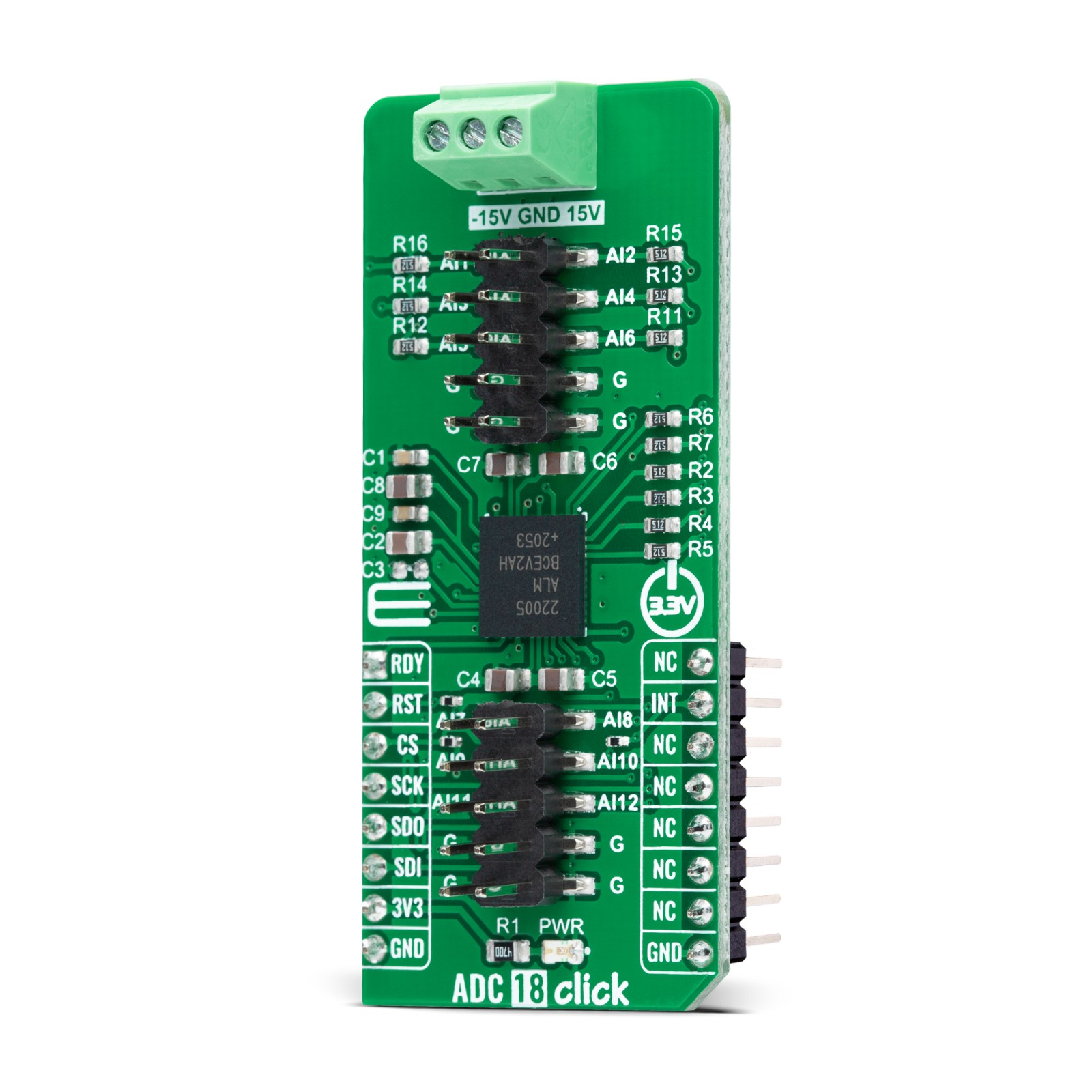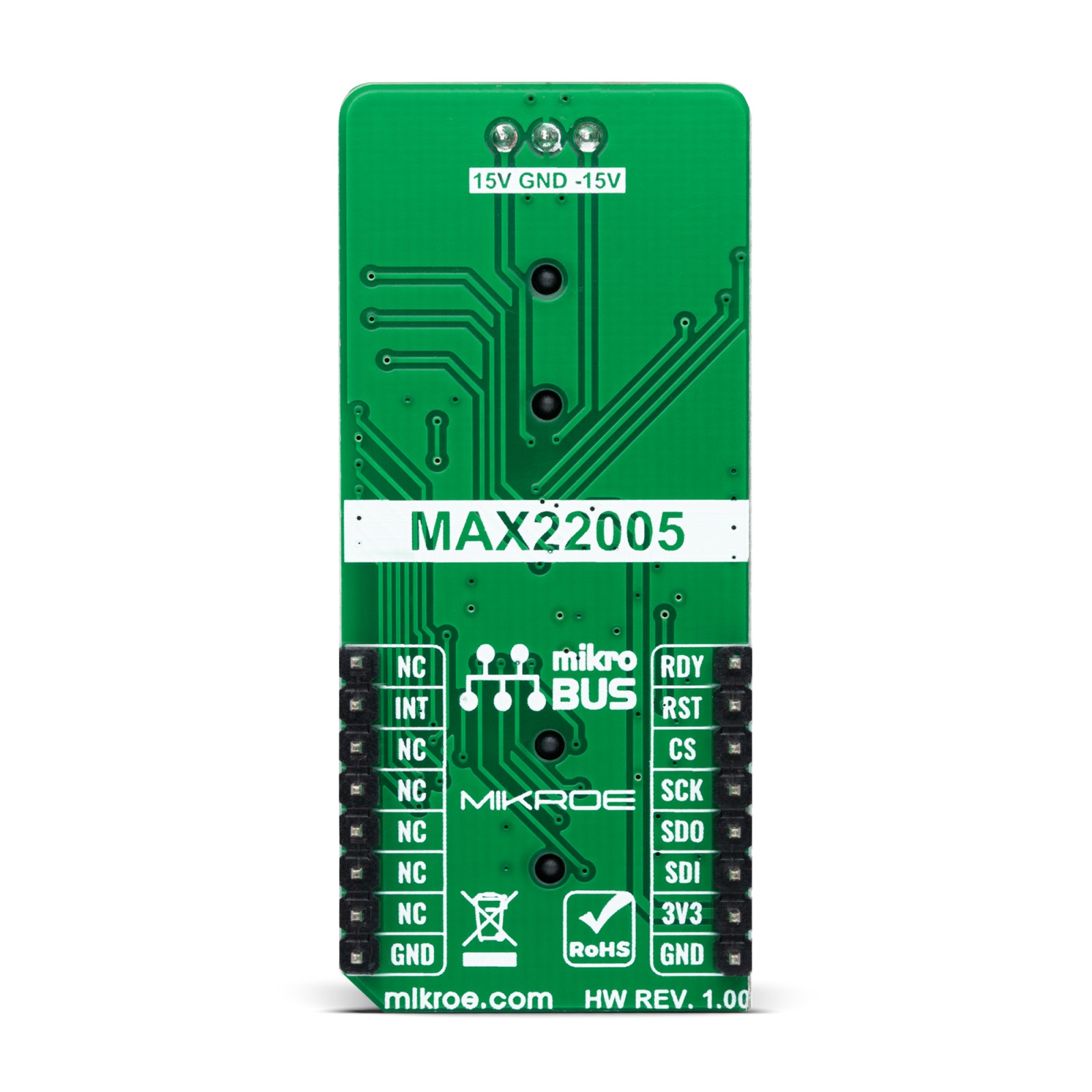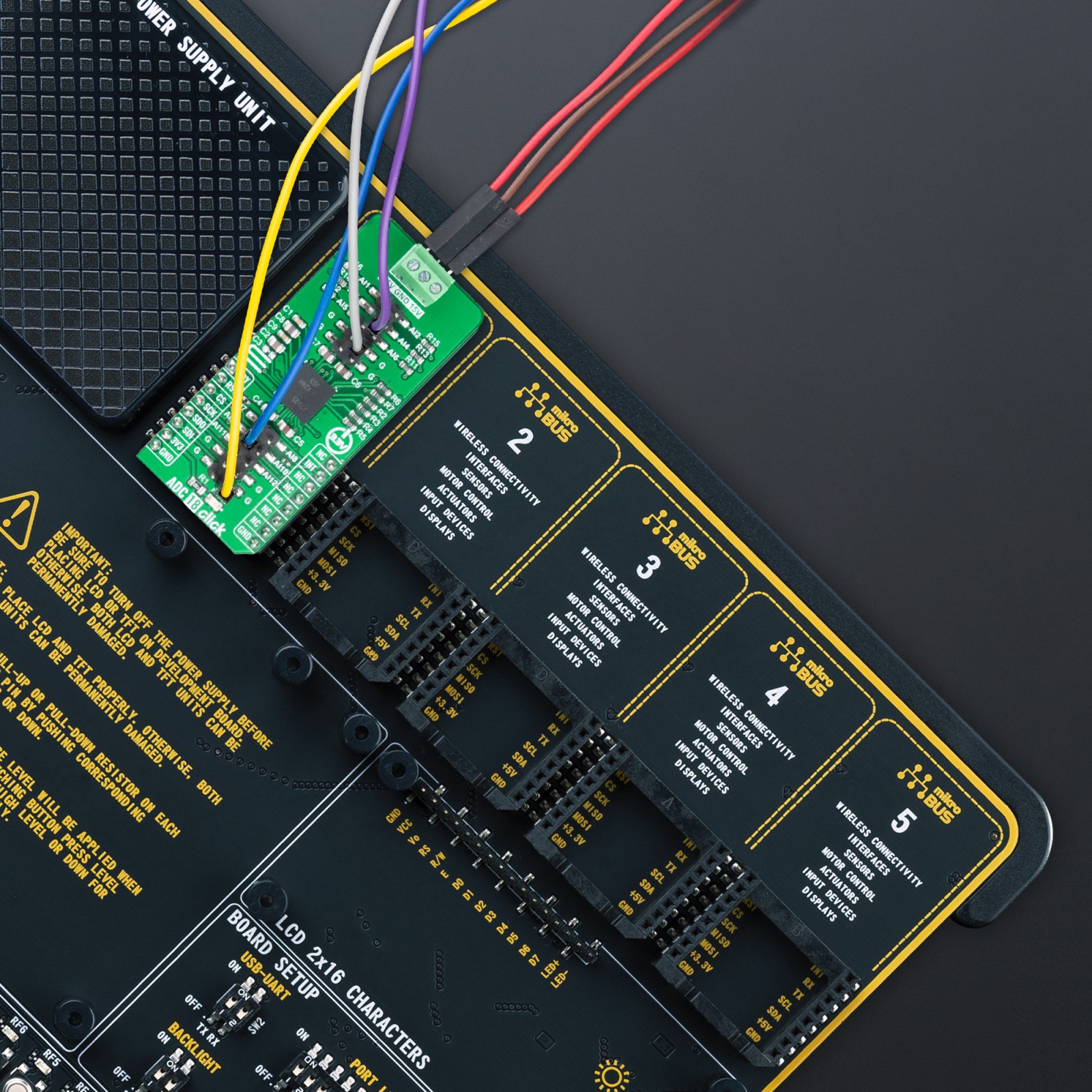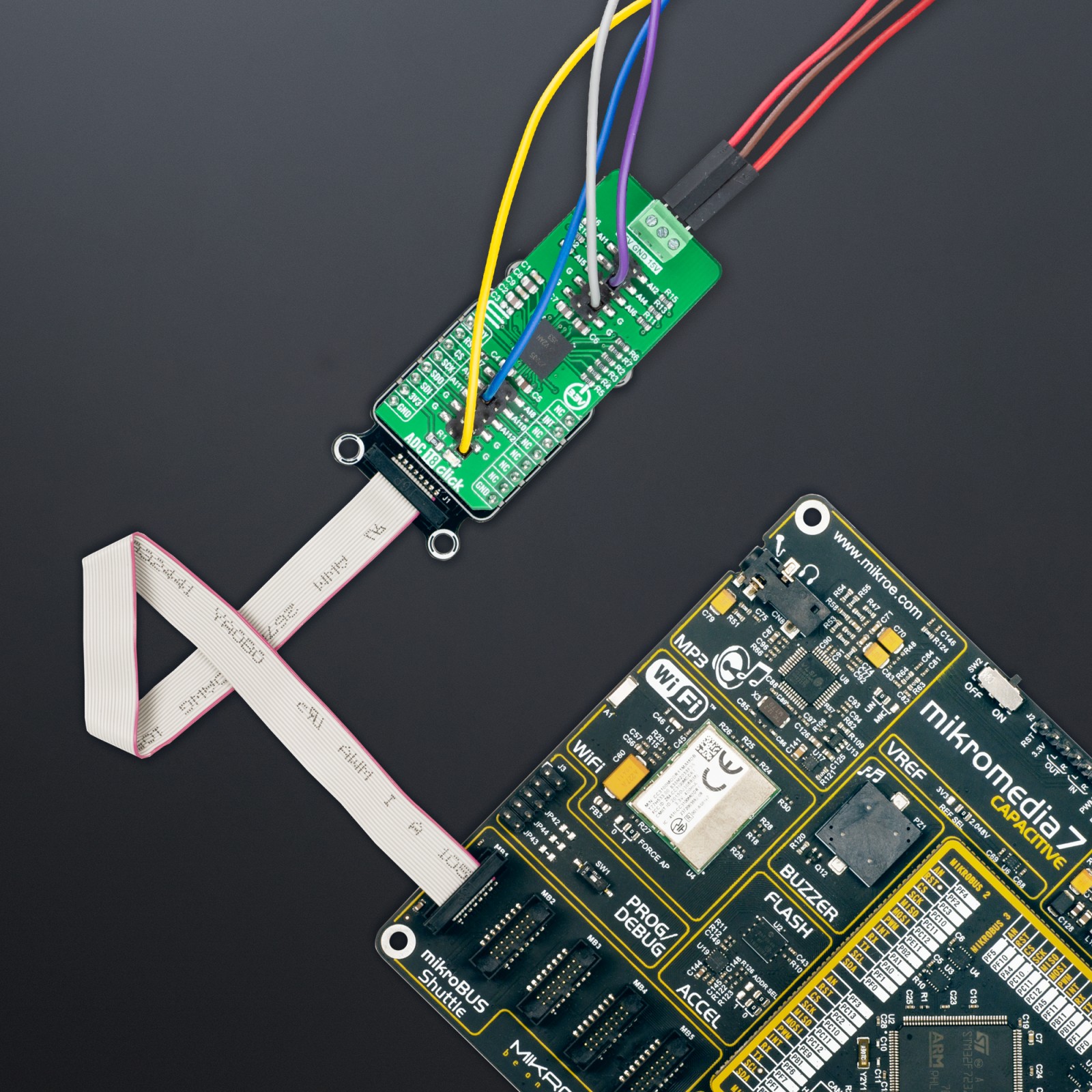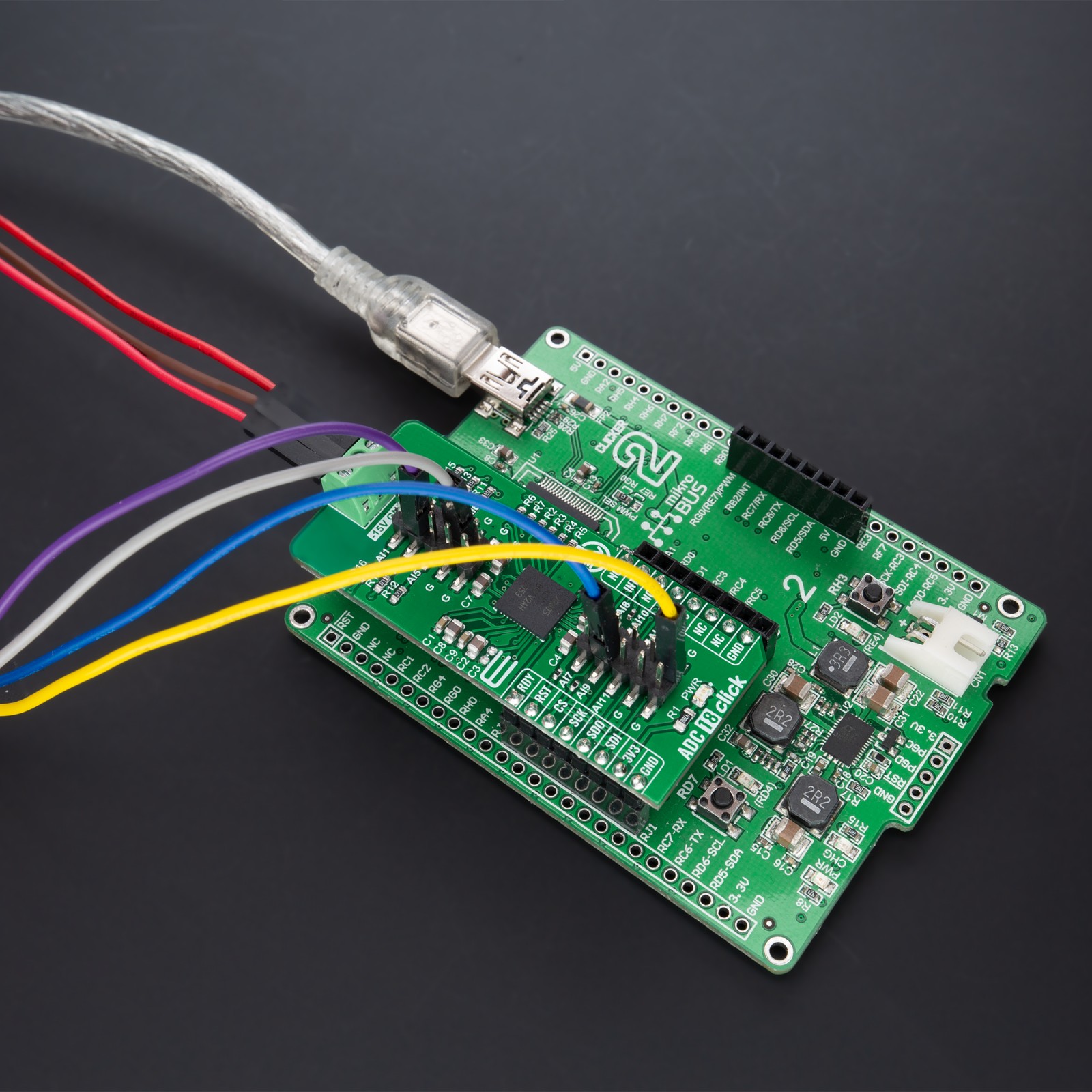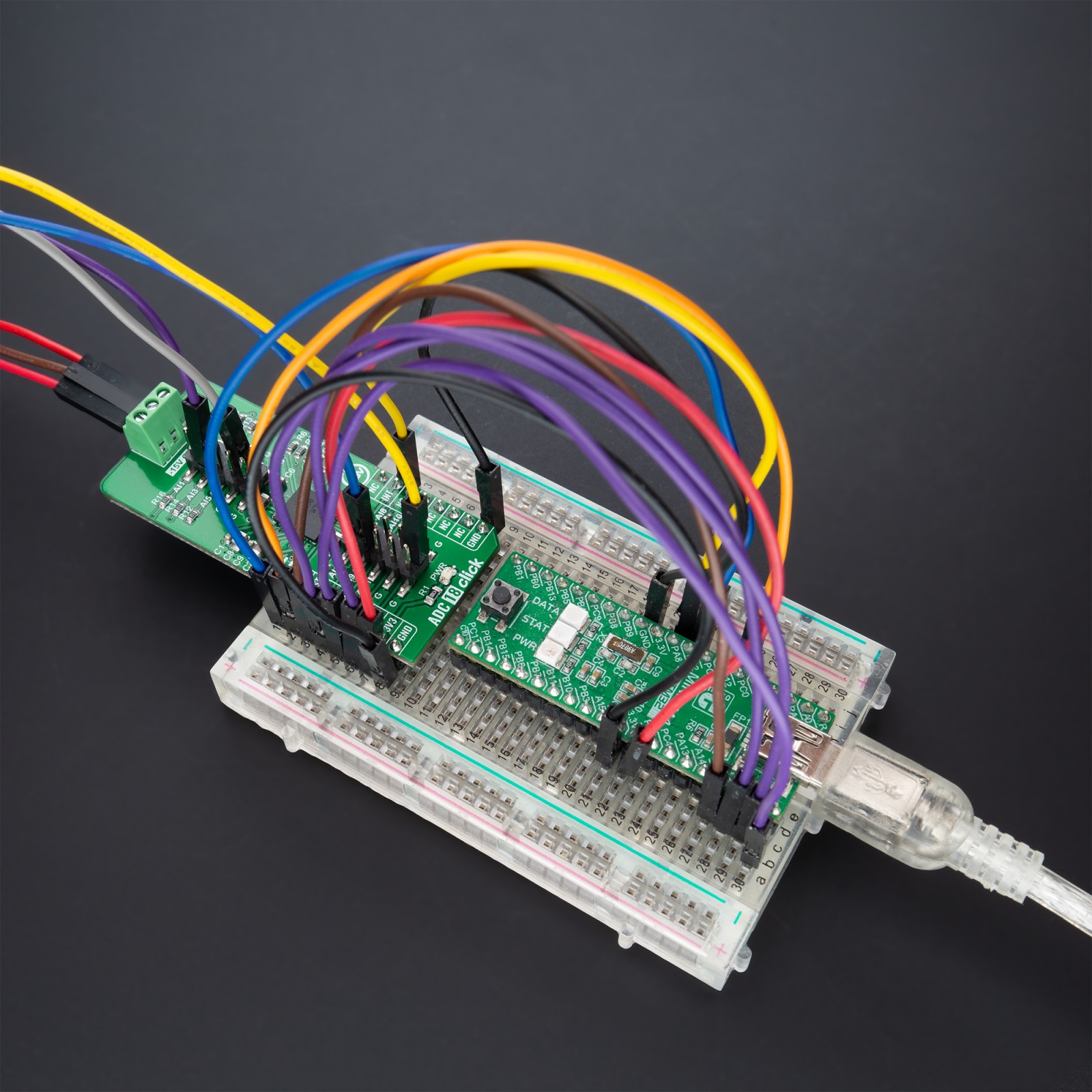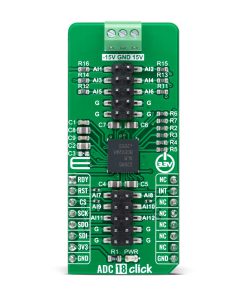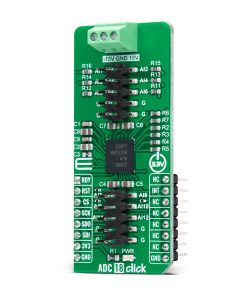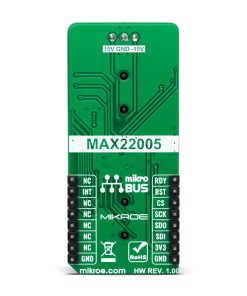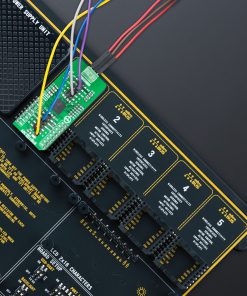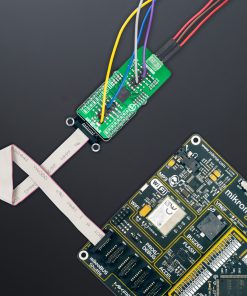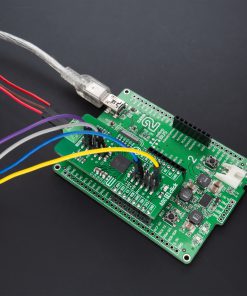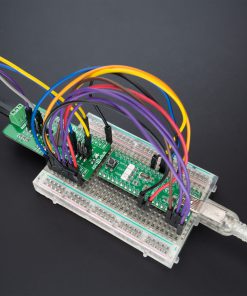Subtotal: R1,050.00
ADC 18 Click
R775.00 ex. VAT
ADC 18 Click is a compact add-on board that contains a high-performance data converter. This board features the MAX22005, an SPI-configurable twelve-channel 24-bit analog-to-digital converter (ADC) from Analog Devices. Input channels can be used as twelve single-ended, six differential, and up to eight multichannel configurable differential inputs. In total, the device supports up to 26 different configurations. The ADC is used with an integrated 5ppm/°C precision reference. Using high-voltage, zero-drift input amplifiers, standard industrial analog input voltage ranges are converted to the ADC input voltage range. This Click board™ offers high accuracy for the most demanding applications, from general-purpose remote data acquisition to industrial applications.
ADC 18 Click is supported by a mikroSDK compliant library, which includes functions that simplify software development. This Click board™ comes as a fully tested product, ready to be used on a system equipped with the mikroBUS™ socket.
Stock: Lead-time applicable.
| 5+ | R736.25 |
| 10+ | R697.50 |
| 15+ | R658.75 |
| 20+ | R633.95 |

 tRF Click
tRF Click 